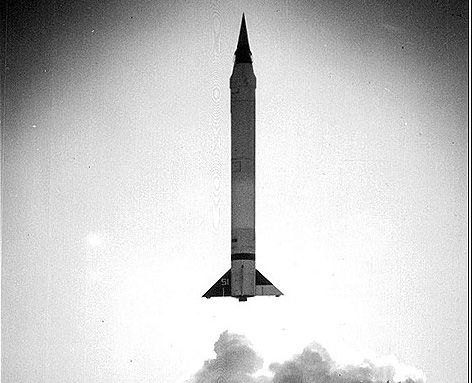By mid 1944 Von Braun and his team have gotten the V2 to operational status and would shortly begin bombarding Allied cities
Launched in vertical , the V2 could reach altitudes over 160 Km (100 miles), past the Von Karman line into outer space
What would be the reaction if a V2 was launched carrying a person ?
The V2 in question would have to be modified , the warhead section carrying the payload where the man carrying capsule would be housed would need to separate from the booster section. This is how the REDSTONE, which was basically V2 ver 2.0, employing the same fuels (LOX and 75 % ethyl alcohol) and using the same graphite carbon vanes in the exhaust stream to guide the rocket.
A parachute would be needed for the crewmember to safely land An ejection seat could be used to have to crew member land using their own parachute vs having chutes large enough to land the entire capsule This is how the early Soviet VOSTOK worked .
What would the reaction be from the German populace, the Allies if Goebbels suddenly announced that Germany had launched a person into space ?
Launched in vertical , the V2 could reach altitudes over 160 Km (100 miles), past the Von Karman line into outer space
What would be the reaction if a V2 was launched carrying a person ?
The V2 in question would have to be modified , the warhead section carrying the payload where the man carrying capsule would be housed would need to separate from the booster section. This is how the REDSTONE, which was basically V2 ver 2.0, employing the same fuels (LOX and 75 % ethyl alcohol) and using the same graphite carbon vanes in the exhaust stream to guide the rocket.
A parachute would be needed for the crewmember to safely land An ejection seat could be used to have to crew member land using their own parachute vs having chutes large enough to land the entire capsule This is how the early Soviet VOSTOK worked .
What would the reaction be from the German populace, the Allies if Goebbels suddenly announced that Germany had launched a person into space ?

